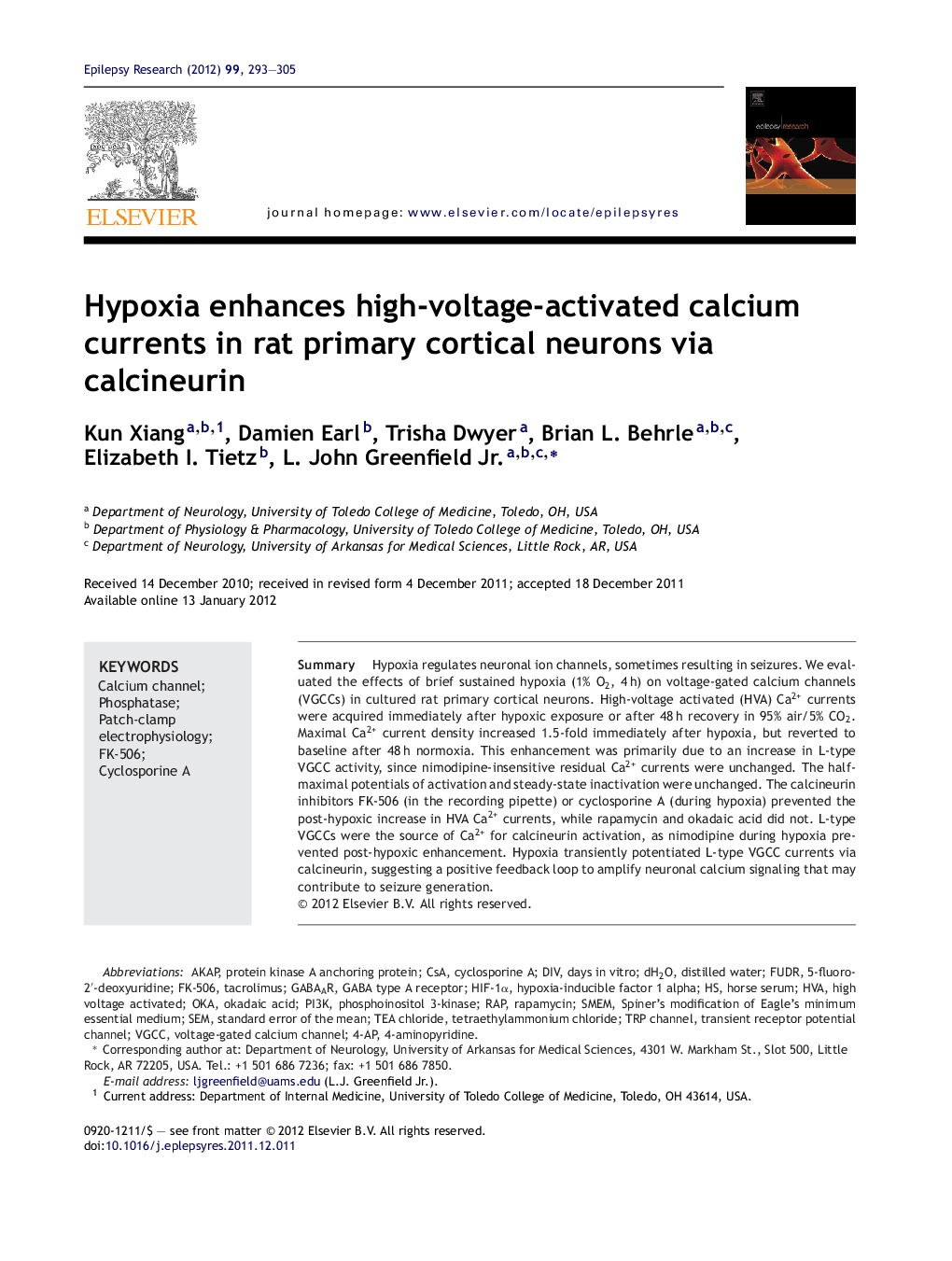| Article ID | Journal | Published Year | Pages | File Type |
|---|---|---|---|---|
| 3052332 | Epilepsy Research | 2012 | 13 Pages |
SummaryHypoxia regulates neuronal ion channels, sometimes resulting in seizures. We evaluated the effects of brief sustained hypoxia (1% O2, 4 h) on voltage-gated calcium channels (VGCCs) in cultured rat primary cortical neurons. High-voltage activated (HVA) Ca2+ currents were acquired immediately after hypoxic exposure or after 48 h recovery in 95% air/5% CO2. Maximal Ca2+ current density increased 1.5-fold immediately after hypoxia, but reverted to baseline after 48 h normoxia. This enhancement was primarily due to an increase in L-type VGCC activity, since nimodipine-insensitive residual Ca2+ currents were unchanged. The half-maximal potentials of activation and steady-state inactivation were unchanged. The calcineurin inhibitors FK-506 (in the recording pipette) or cyclosporine A (during hypoxia) prevented the post-hypoxic increase in HVA Ca2+ currents, while rapamycin and okadaic acid did not. L-type VGCCs were the source of Ca2+ for calcineurin activation, as nimodipine during hypoxia prevented post-hypoxic enhancement. Hypoxia transiently potentiated L-type VGCC currents via calcineurin, suggesting a positive feedback loop to amplify neuronal calcium signaling that may contribute to seizure generation.
